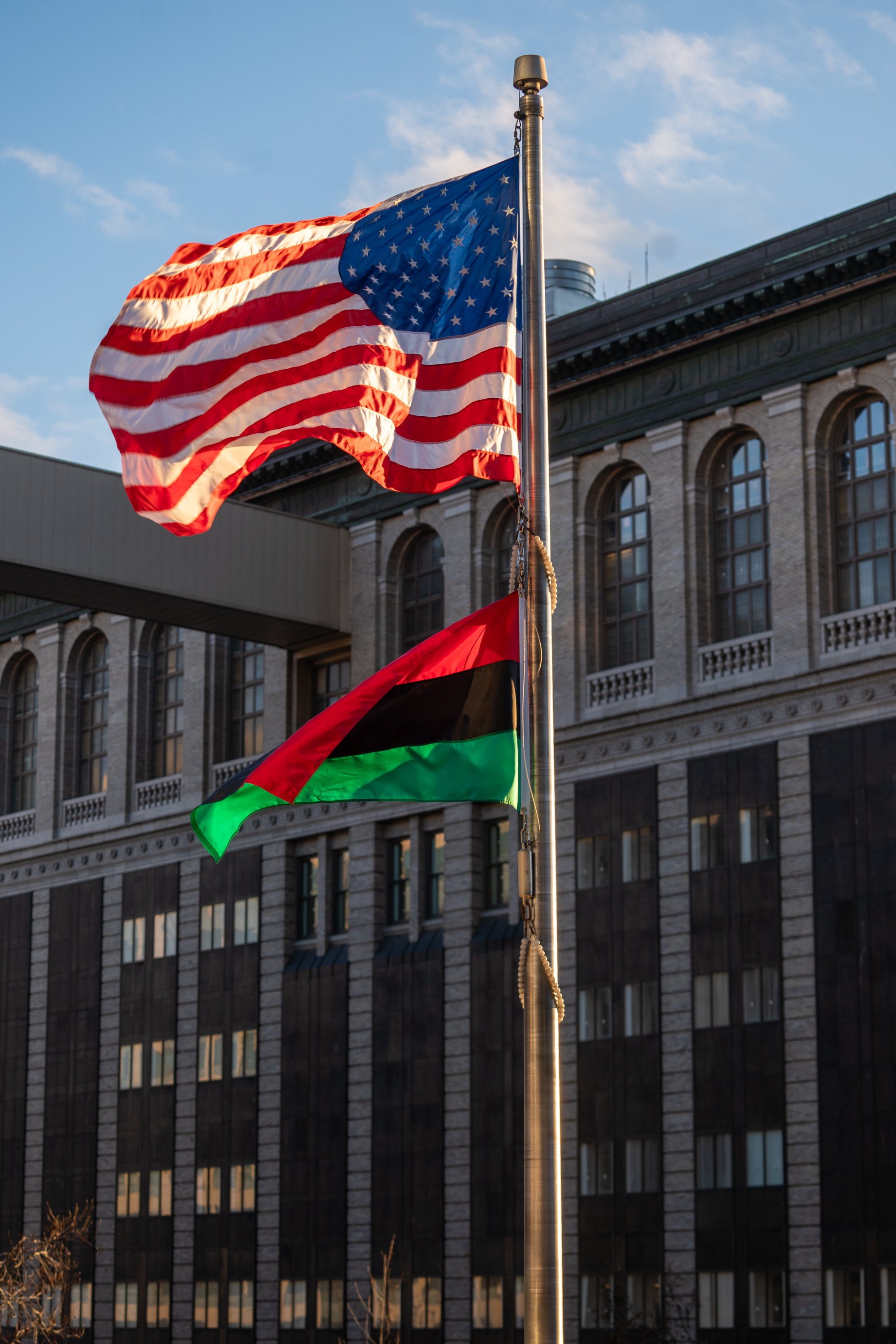Unveiling the Colors of Liberation: The History of the Black Liberation Flag
Photos by Susan Fried on behalf of Converge Media.
Written by Besa Gordon: Last week, Seattle made history by hoisting the Black Liberation flag over City Hall for the first time. This was a momentous occasion to honor Black History Month and celebrate the strength, resilience, and enduring spirit of Seattle’s Black community. Seattle Mayor Bruce Harrell, Seattle City Councilmembers Joy Hollingsworth and Rob Saka, Esq., and King County Councilmember Girmay Zahilay, along with community members, came together to celebrate this historic moment. It was great to see leaders and community members come together to recognize and uplift the contributions of the Black community. After attending this historic event, I wanted to take a moment to talk about the Black Liberation Flag and it’s meaning for those that may not be fully familiar with it.
Origins
The Black Liberation flag, with its bold red, black, and green stripes, traces its origins to the early 20th century. It emerged during a period of profound social upheaval as African American communities sought to assert their identity and demand justice in the face of systemic oppression.
The flag's colors hold deep symbolic meaning:
Red: Symbolizes the blood shed by countless Black individuals in the struggle for freedom and equality. It serves as a poignant reminder of the sacrifices made on the journey towards liberation.
Black: Represents the collective identity and unity of Black people worldwide. It embodies pride in one's heritage and resilience in the face of adversity.
Green: Signifies the abundant natural wealth of Africa, as well as hope for the future and the promise of prosperity and growth.
Evolution
The roots of the Black Liberation flag can be traced back to the early 20th century, but its modern incarnation took shape during the 1960s Civil Rights Movement. Activists such as Marcus Garvey and the Universal Negro Improvement Association (UNIA) played a pivotal role in popularizing the flag as a symbol of Black pride and solidarity.
During this period of heightened activism and social consciousness, the Black Liberation flag became a ubiquitous symbol at protests, marches, and rallies. It served as a rallying point for activists and a visual representation of their demands for justice, equality, and self-determination.
Global Impact
While the Black Liberation flag has its roots in the United States, its influence extends far beyond its borders. From the Caribbean to Africa and beyond, Black communities worldwide have embraced the flag as a symbol of solidarity and resistance against colonialism, imperialism, and systemic racism.
In recent years, the Black Liberation flag has experienced a resurgence, as movements such as Black Lives Matter have reignited conversations about racial justice and equality. It serves as a potent reminder of the ongoing struggle for liberation and the importance of unity in the face of adversity.
Conclusion
The Black Liberation flag stands as a testament to the resilience, strength, and enduring spirit of Black communities worldwide. Its vibrant colors and powerful symbolism serve as a beacon of hope and inspiration for all those who continue to fight for justice, equality, and liberation.
As we reflect on its history during Black History Month, let us honor the legacy of those who have come before us and recommit ourselves to the ongoing struggle for a more just and equitable world.





